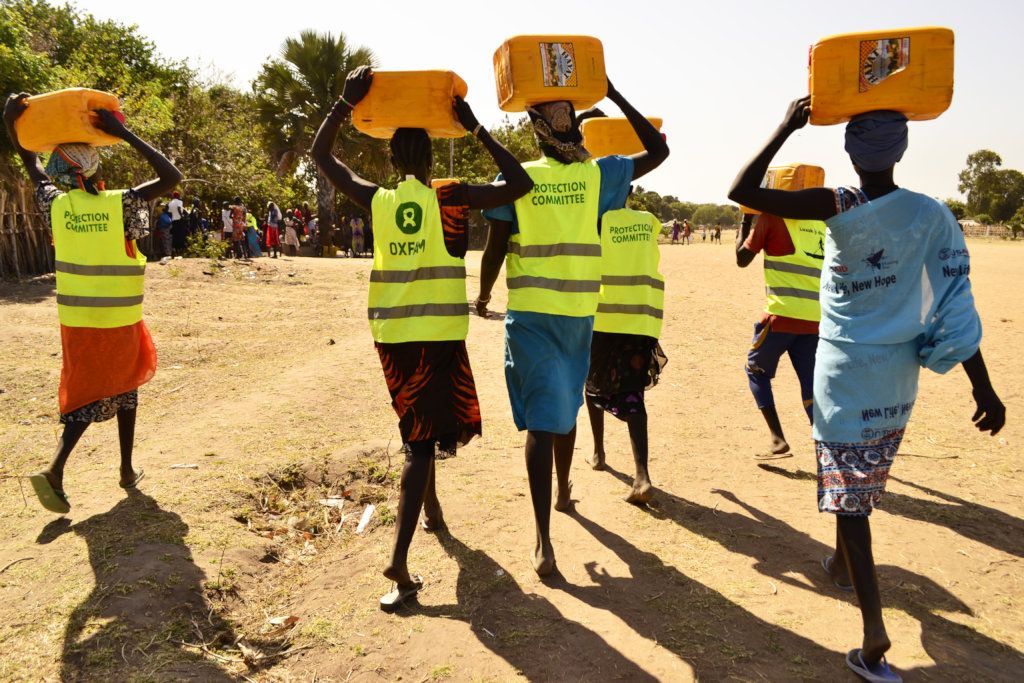By Jake Ampleford | Partnerships Executive
During the last few months flooding has displaced around 180,000 people whilst destroying tens of thousands of hectares of cropland.
Oxfam is responding to flood affected families in Turkana and Wajir counties in Kenya. Cash distributions are ongoing to 1250 HHs in Turkana and 600 HHs in Wajir. The total number of people reached by Oxfam flood response is estimated to be 38,788. This is the third rapid response that the Kenya team has been involved in this year.
Conflict-induced displacement is expected to continue disrupting food and income access among IDPs and drive increased humanitarian assistance needs. In Ethiopia, 1.4 million new internal displacements have already been recorded, surpassing both Syria and the Democratic Republic of the Congo. Somalia and South Sudan too are among the 10 worst-affected countries for new displacement.
The total number of moderately acutely malnourished children under the age of 5 currently stands at 3.5 million in Ethiopia, 328,000 in Kenya and 301,000 in Somalia while the number of severely malnourished children is at 350,000 in Ethiopia, 71,500 in Kenya and 48,000 in Somalia.
To date Oxfam’s response to the East Africa Food Crisis has provided:
Ethiopia
Somali Region Humanitarian and Resilience Strategy was developed and effective since April 2018. As of July 2018, Oxfam has reached 17,446 new beneficiaries.
Somaliland
A total of 62,021 people were reached in Sool, Sanaag and Toghdeer in July 2018.
Kenya
81,911 people remain affected by floods in Tana River county.
Fatuma’s Story
Fatuma Juma, 25 years, a mother of four children, three daughters and one son born and bred in Bakuyu village, Tana River County, Kenya is one of the people that has been affected by the severe flooding. Fatuma is a member of a women group locally referred to as chama with 12 members. They each contribute USD 0.49 and share it in a merry-go-round approach on a weekly basis. Currently the group is dormant because of the floods that distabilised their source of livelihoods.
“Once we recover from the effects of the floods, we will resume running our chama which will help us grow our businesses and improve lives,” Fatuma says. Fatuma’s two roomed family house was not spared during the March 2018 floods in Tana River County. “The roof and half the wall were all washed away together with our household items. I am now living in a tent with my husband and our four children,”
According to Fatuma, women were the hardest hit, such that while in the camps they had to wait for darkness to relieve themselves in the nearby bush. Others took extreme measures by avoiding meals to avoid the need to relieve themselves.
These toilets have helped us maintain basic hygiene and prevent diseases because before that we were helping ourselves in the nearby bush which is dehumanizing.”
Project reports on GlobalGiving are posted directly to globalgiving.org by Project Leaders as they are completed, generally every 3-4 months. To protect the integrity of these documents, GlobalGiving does not alter them; therefore you may find some language or formatting issues.
If you donate to this project or have donated to this project, you can receive an email when this project posts a report. You can also subscribe for reports without donating.
Support this important cause by creating a personalized fundraising page.
Start a Fundraiser